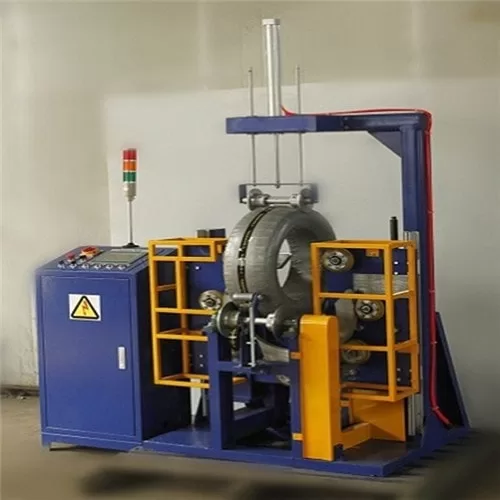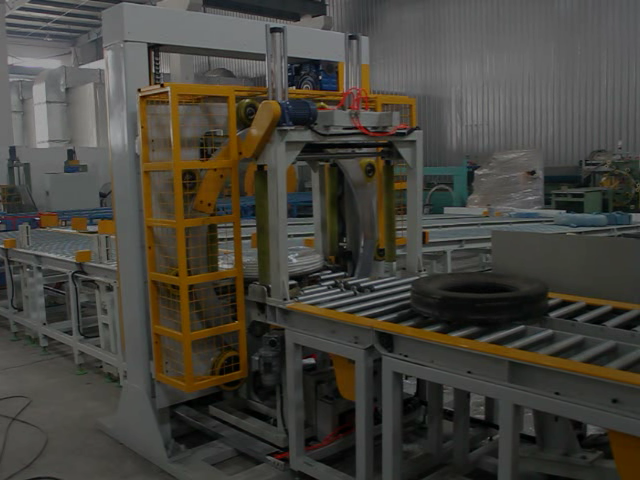Understanding Tyre Wrapping Machines: Operation, Benefits, and Applications in the Automotive Sector
Protecting tyres throughout the supply chain – from manufacturing to final installation – is crucial for maintaining quality and preventing costly damage. Tyre wrapping machines offer an effective automated or semi-automated solution for applying protective films, ensuring tyres remain clean, undamaged, and ready for storage or transport.
What is a Tyre Wrapping Machine?
A Tyre Wrapping Machine is specialized industrial equipment designed specifically for packaging tyres within the automotive industry and its associated supply chains. These machines efficiently envelop tyres using durable, protective materials, most commonly stretch film or specialized tyre wrapping films. Key components typically include:
- Rotating Mechanism: Securely holds the tyre and rotates it during the wrapping cycle.
- Film Delivery System: Dispenses the wrapping material, often featuring automatic feeding and cutting mechanisms.
- Control Panel: Allows operators to configure wrapping parameters such as film tension, number of wraps, and cycle speed, often tailored to specific tyre dimensions.
The primary purpose of this equipment is to safeguard tyres against environmental factors (dust, moisture, UV light) and physical damage (scratches, abrasions) during handling, storage, and transportation, ensuring they reach the end-user in optimal condition.
How Does a Tyre Wrapping Machine Work?
While specific operations vary by model (manual, semi-automatic, fully automatic), a typical wrapping cycle involves:
- Loading: The tyre is placed onto the machine's loading area or directly onto the rotating mechanism.
- Initiation: The operator starts the wrapping cycle via the control panel.
- Wrapping: The tyre begins to rotate as the film carriage dispenses and applies the stretch film around the tyre's circumference and often through its center bore for full coverage. Film tension is maintained according to preset parameters.
- Cutting and Securing: Once the wrapping cycle is complete, the film is automatically or manually cut and secured to the tyre.
- Unloading: The wrapped tyre is removed from the machine, ready for the next stage.
Key Features and Specifications

Understanding the typical specifications helps in evaluating the suitability of a tyre wrapping machine for a given application.
Note: The parameters listed below are indicative and may not precisely match the equipment shown in the video. For exact specifications tailored to your needs, direct consultation is recommended.
Machine Type: Often Semi-Automatic (requiring operator intervention for loading/unloading) or Fully Automatic.
Compatible Tyre Sizes: Typically defined by a range of diameters (e.g., 500mm to 1100mm) and widths.
Film Type Compatibility: Commonly uses LLDPE stretch film, but compatibility with other materials like polyethylene might be available.
Wrapping Speed: Measured in tyres per hour (e.g., up to 35 tyres/hour), depending on automation level and tyre size.
Power Requirement: Standard industrial power specifications (e.g., 220V, 50Hz, single phase or three phase).
Machine Dimensions: Footprint specified by Length, Width, and Height (e.g., L: 1600mm; W: 1200mm; H: 1800mm).
Machine Weight: Approximate weight for logistical planning (e.g., ~400kg).
Control System: Ranges from basic manual controls to programmable logic controllers (PLCs) with preset programs.
Safety Features: Essential components like emergency stop buttons, safety guards, and sensors.
Additional Features: May include adjustable film tension control, automatic film cutting/clamping, variable speed controls, and options for different wrapping patterns.
Core Benefits of Utilizing Tyre Wrapping Machines
Integrating tyre wrapping machines into operations yields several advantages:
- Enhanced Tyre Protection: Shields tyres from dust, dirt, moisture, UV degradation, and physical damage during handling and storage.
- Improved Efficiency: Automates or semi-automates the wrapping process, significantly increasing throughput compared to manual methods.
- Optimized Storage and Handling: Wrapped tyres can often be stored more densely and handled more easily, reducing space requirements and logistical challenges.
- Professional Presentation: Provides a clean, consistent, and professional appearance for tyres, enhancing brand image and customer perception.
- Reduced Material Waste: Controlled film application minimizes overuse compared to manual wrapping.
- Cost Savings: Reduces labour costs and minimizes losses due to damaged inventory.
Applications Across the Automotive Supply Chain

Tyre wrapping machines are valuable assets in various segments of the automotive industry:
- Automotive Manufacturing Plants: Essential for packaging newly manufactured tyres emerging from the production line. Wrapping protects them during intra-plant logistics, warehousing before vehicle assembly, or shipment to distribution centers. This maintains tyre integrity and cleanliness, crucial for quality control and final vehicle presentation.
- Tyre Distribution Centers & Warehouses: Provides an efficient method for preparing replacement tyres for storage and subsequent distribution. Protective wrapping prevents damage during stacking and handling in large warehouse environments, preserves tread and sidewall condition, and streamlines inventory management and order fulfillment processes.
- Retail and Service Centers: Used by car dealerships, tyre shops, and service centers to maintain the quality of inventory tyres, whether on display or stored. Protection against environmental factors ensures tyres remain in sellable, pristine condition, enhancing customer satisfaction and reducing the risk of needing to discount or discard aged or dirty stock.
Considerations When Selecting a Machine
Choosing the right tyre wrapping machine involves evaluating:
- Tyre Size Range: Ensure the machine accommodates the smallest and largest tyres you handle.
- Throughput Requirements: Match the machine's speed (tyres per hour) to your operational needs.
- Level of Automation: Decide between manual, semi-automatic, or fully automatic based on labour availability, budget, and volume.
- Film Specifications: Confirm compatibility with your preferred type and gauge of wrapping film.
- Budget and ROI: Balance initial investment against projected savings in labour, material, and reduced damage.
- Space Availability: Consider the machine's footprint and required operating area.
By carefully considering these factors, businesses can implement tyre wrapping solutions that significantly improve efficiency, protection, and overall operational quality within the automotive tyre supply chain. For further information on packaging standards, consult resources from industry bodies like the Tire Industry Association (TIA) (Note: External link example, ensure relevance and credibility).